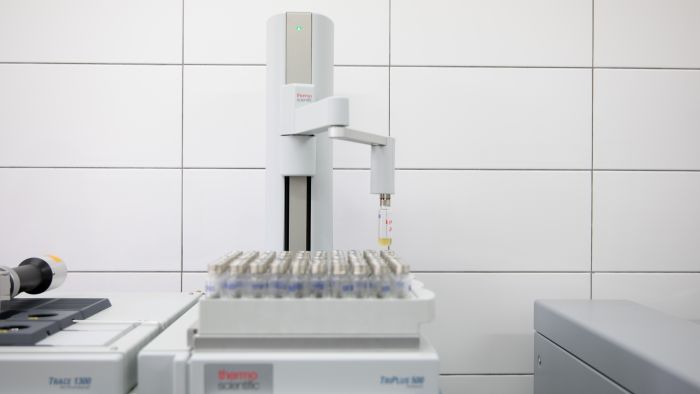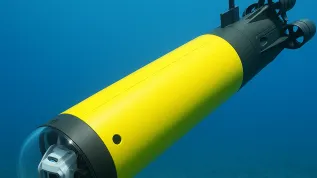
Samples of e-cigarettes available on store shelves contain estragole, which is banned in the EU. In addition, all products of this type contain substances that a prohibited in tobacco products, shows research by Dr. Edyta Budzyńska from the Military University of Technology in Warsaw.
The electronic cigarette market had been unregulated for a long time. Only the European Union Directive of 2014 introduced standards for e-cigarettes and classified them as products related to tobacco products. In Poland, the first regulations appeared even later, in 2016. In the following years, a number of new regulations were introduced to better protect the society against the use of e-cigarettes. But does this make them safe and harmless to health?
Dr. Edyta Budzyńska from the Faculty of New Technologies and Chemistry of the Military University of Technology in Warsaw analyses flavouring substances in cigarettes and beers. She has already published the results on the former in the journal Talanta (https://doi.org/10.1016/j.talanta.2019.120594). She emphasizes that the substances responsible for the various smells and flavours of e-cigarettes also affect other organs when inhaled into the lungs, and that the detected compounds also include those prohibited by law.

'As part of my PhD work, I focused on basic research on chemical ionisation in ion mobility spectrometry. During my doctoral studies, I went twice on a research fellowship at the Hamm-Lippstadt University of Applied Sciences. There, I did research on e-cigarettes. My goal was to test them for the presence of flavouring substances included in the EU directive and German regulations created on its basis. I am currently using a similar research methodology at the Military University of Technology to study various types of beers and other beverages', the researcher explains in the release sent to PAP.
According to Dr. Budzyńska, the first e-cigarettes were produced in Asian countries in 2005-2006. From there, they came to the European market. Since then, their popularity has been growing. Manufacturers boast that while traditional tobacco cigarette smoke contains more than 6,000 identified chemicals, a large group of which are harmful to human health and more than 70 can cause cancer, aerosols from e-cigarettes have a simpler content and fewer substances that pose a potential risk to the user. Despite this, they are not a harmless alternative, quite the opposite.
'E-cigarettes contain a liquid that is delivered through the wick to a battery-powered heating coil. They can be actuated by a push button or air flow. The e-liquid is evaporated to form an aerosol. The main ingredients of e-cigarette cartridges are glycerine, propylene glycol, water, nicotine and flavours. I decided to test the latter group of compounds', says Dr. Edyta Budzyńska.
She looked at substances that were prohibited in traditional tobacco products but allowed in electronic cigarettes (linalool, geraniol, menthol, menthone) and those that are strictly prohibited by law as ingredients in any tobacco-related products (2,3-butanedione , 2,3-pentanedione, 2,3-hexanedione, 2,3-heptanedione, estragole, methyl eugenol).
'The research method I used allows to detect and identify almost all selected compounds. The only exception is 2,3-butanedione. Our e-liquid testing has shown that all tested samples contained at least two compounds prohibited only in tobacco products and allowed in electronic cigarettes. I found all four substances in four samples. I detected the banned compound - estragole - in two samples', the scientist says.
All her research was based on an analytical technique called ion mobility spectrometry. It consists in identifying substances based on the study of the movement of ions produced from ionised analyte molecules in the gas phase in the presence of an electric field.
Detectors used in ion mobility spectrometry have been known since the 1970s. They have been used by uniformed services to detect drugs, chemical warfare agents and explosives, even in trace amounts. Currently, they are also being introduced into biomedical applications. The biggest advantage of ion mobility spectrometry, as the expert from the Military University of Technology emphasises, is the speed of analysis, very low detection thresholds and relatively simple operation. Unfortunately, the analysis may be hampered by too low resolution, which is why researchers are searching for new solutions to improve the operation of spectrometers.
'During the fellowship, we used a gas chromatograph coupled with an ion mobility spectrometer. It was a very valuable experience for me that helped to create a similar measurement system in our laboratory at the Military University of Technology', says Dr. Budzyńska. She adds that this technique is very often used to analyse volatile compounds in various products. In addition to cigarettes or beer, these can include other alcohols, oils, teas, meat, fish. 'Quick and effective analysis of flavouring compounds in food samples enables quality control. This is not the only advantage of this combined technique. Thanks to its use, we can, for example, determine the country of origin of food, in the case of tea - determine the time of its harvest, and assess the taste profile of the product or its freshness', she says.
Although the researcher has already completed the analysis of flavouring compounds in e-cigarettes, she does not abandon this topic. 'Before undertaking further research, I wanted to find out to what extent the flavouring substances I had investigated in previous studies were used in the food industry. Turns out they're everywhere', she says. 'In the case of beers, they are created in the fermentation process and define the flavour profile of the final product'.
'Determining the content of diacetyl and 2,3-pentanedione in beer is needed to assess its quality. Tests are also carried out at the stage of product production control', says Dr. Budzyńska. 'The gas chromatograph coupled with the ion mobility spectrometer proved to be an excellent way to test flavourings in beers'.
In the first stage of the new project, the scientist tested 2,3-butanedione, which is responsible for the buttery flavour profile of beer, and 2,3-pentanedione, which gives the honey flavour.
'I am now at the stage of processing research results. I will publish them soon. I intend to continue the research, because publications on this subject are clearly lacking. At the moment, apart from the Military University of Technology, only a few places in Poland use this measurement technique', she adds.

It is estimated that around 1.2 million people in Poland use e-cigarettes. Young people use them more often than people over 45. They are especially often used by the youngest social group, i.e. people under 24 years of age. The Ombudsman for Children alerts that every fourth teenager uses e-cigarettes, and half of the users do it practically every day. Every fourth minor user considers themselves addicted. A Public Opinion Research Center study revealed that vapers believe that it is less harmful compared to smoking traditional cigarettes. This is the opinion of 68 percent respondents.
PAP - Science in Poland, Katarzyna Czechowicz
kap/ agt/
tr. RL













